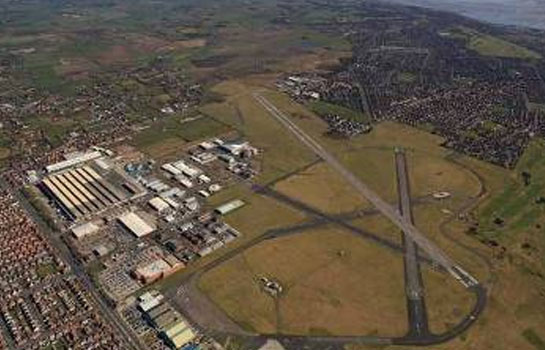With aviation roots that trace back to 1909, Blackpool Airport was one of the first aviation sites in the UK.
Originally known as Squires Gate it held the UK’s first aviation meeting in 1910. The site was also a racecourse and was also the site for a hospital during the First World War.
Flights from the site resumed in the early 1930s. Small UK airlines used the airfield during the mid-1930s. Railway Air Services commenced schedules to Blackpool from 15 April 1935, linking the airport with the Isle of Man, Manchester and Liverpool. Connections could be made at the two cities to London and the south and west of England. In June 1937, airline operations were transferred to Stanley Park Aerodrome. The sister of aviation pioneer Amy Johnson lived in Stanley Park, resulting in her often paying a visit; Johnson's last complete flight was a ferry flight for the ATA from Squires Gate to Oxford.
Work on enlarging and improving the airfield and facilities began in late 1937, but the aerodrome was requistioned by the Air Ministry in 1938. Three bituminous runways were laid to support operations, with squadrons stationed at RAF Squires Gate during the Second World War. The base was used for training, as there was lots of local accommodation available for recruits.
Vickers-Armstrong built over 2,500 Wellington bombers here.
In recent years the airport has been steadily expanding, accommodating helicopter operations for British Gas, and attracting scheduled flights from budget airlines. Scheduled services by smaller operators to the Isle of Man are also flown. Since World War II, the airport has also been a centre for private, club and general aviation.
For many years Blackpool has been the base of an offshore helicopter operation flying crews to and from the Irish Sea oil fields. All offshore flights are operated through the purpose built terminal which is located next to the main passenger terminal.
AVGAS, JET A1 available. Bar/Café in the terminal. High Vis jackets please. Approach radio is 119.950 and the tower is 118.400.


